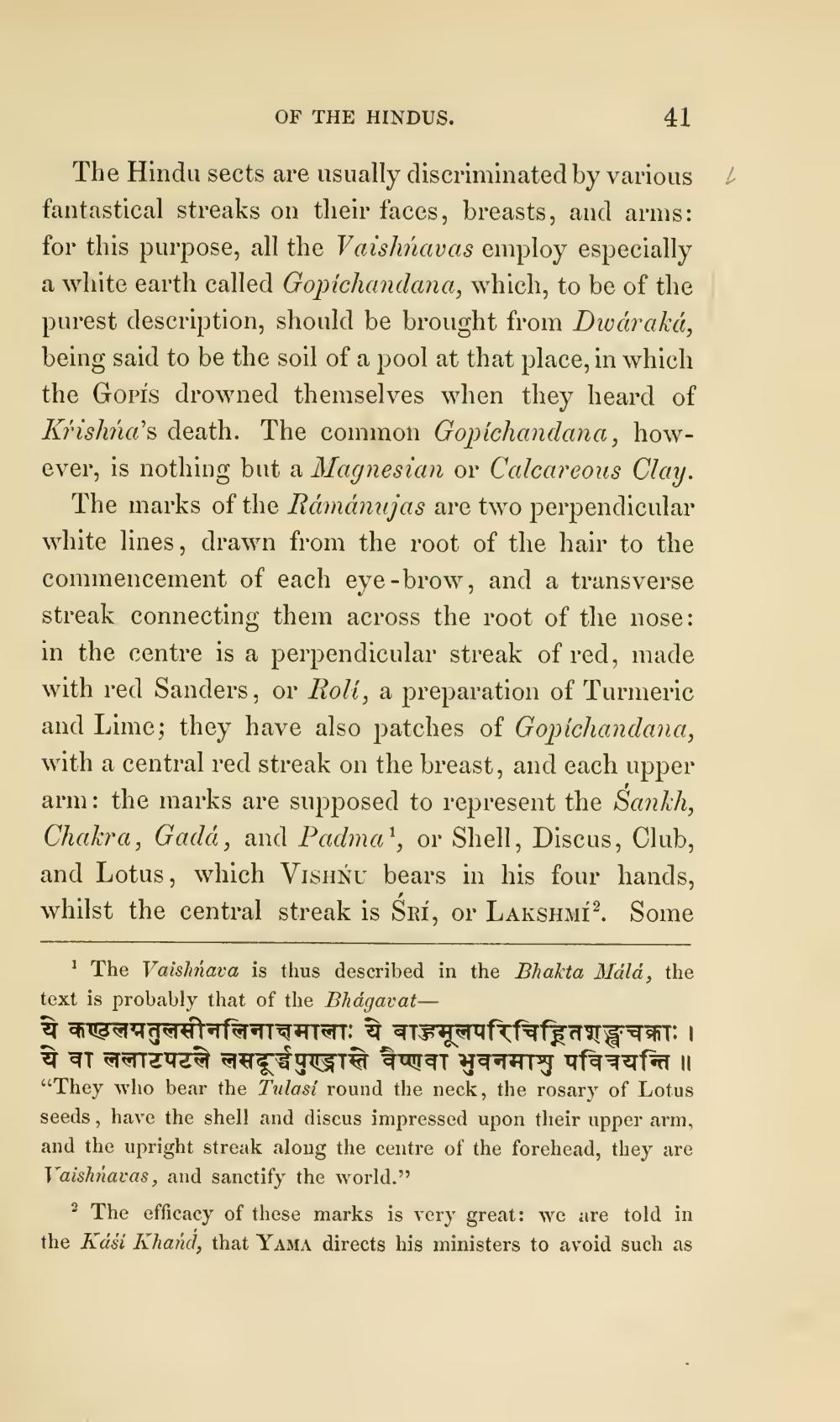________________
OF THE HINDUS.
41
The Hindu sects are usually discriminated by various ! fantastical streaks on their faces, breasts, and arms: for this purpose, all the Vaishnavas employ especially a white earth called Gopichandana, which, to be of the purest description, should be brought from Dwaraká, being said to be the soil of a pool at that place, in which the Gopis drowned themselves when they heard of Krishna's death. The common Gopichandana, however, is nothing but a Magnesian or Calcareous Clay.
The marks of the Rámánujas are two perpendicular white lines, drawn from the root of the hair to the commencement of each eye-brow, and a transverse streak connecting them across the root of the nose: in the centre is a perpendicular streak of red, made with red Sanders, or Rolí, a preparation of Turmeric and Lime; they have also patches of Gopichandana, with a central red streak on the breast, and each upper arm: the marks are supposed to represent the Sankh, Chakra, Gadá, and Padma', or Shell, Discus, Club, and Lotus, which VISHŃU bears in his four hands, whilst the central streak is Sri, or LAKSHMI?. Some
The Vaishnava is thus described in the Bhakta Mála, the text is probably that of the Bhagavatये कण्ठलग्नतुलसीनलिनाक्षमालाः ये बाहुमूलपरिचिह्नितशङ्खचक्राः । ये वा ललाटपटले लसदूर्द्ध पुण्ड्रास्ते वैष्णवा भुवनमाशु पवित्रयन्ति ॥ “They who bear the Tulasi round the neck, the rosary of Lotus seeds, have the shell and discus impressed upon their upper arm, and the upright streak along the centre of the forehead, they are Vaishnaras, and sanctify the world.”
? The efficacy of these marks is very great: we are told in the Káší Khand, that YAMA directs his ministers to avoid such as




